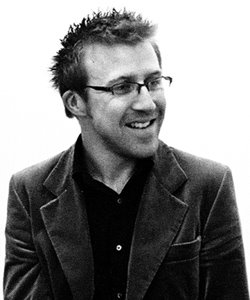The learning of lines

I started thinking about the line learning process. How one of the cast said to me: 'I read the whole play through out loud in front of a tape recorder but the part I've got to learn I read at sotto voce.' I started thinking about the phrase 'sotto voce.'
sotto voce \SAH-toh-VOH-chee\, adverb or adjective:
1. Spoken low or in an undertone, as not to be overheard.
2. (Music) In very soft tones. Used chiefly as a direction.
I started thinking that it represented the notion of absence that I was interested in but was finding it difficult to manifest through the development of two different pieces of work. I started thinking that the way people learn their lines is an interesting experiment in itself - the highlighting - the recording - the listening. I started thinking about recording one part of a play and leaving silence for the rest. I started thinking about recording all the parts of a play but onto different tapes and playing them - either with silence in between cues or triggering manually. I started thinking about recording the stage directions - the words that the writer never meant to be heard - and leaving silence where people speak. I started thinking about how the meaning would become slippery, how images would be conjured up in the space. The space between stage directions and the space in which you were listening. I started thinking about recording the stage directions from all of the plays the drama group have performed onto different tapes and playing them at the same time. I started thinking about the way in which they all end with the line 'The Curtain Falls' and whether they would finish at the same time. I started thinking about placing the tape players on the same stage the drama group will be performing on.
All of this responds to an idea of absence - absence of content, absence of meaning, absence of the writer, absence of the reader, absence of the speaker. It flirts with the philosophical research I have been doing. Logocentrism - the view that speech not writing is the centre of language. Derrida's argument that speech may be a kind of presence, because the speaker is simultaneously present for the listener, but writing may be a kind of absence, because the writer is not simultaneously present for the reader. My experiment would be a recording of a reading of writing (but only the writing that was never meant to be read) read by a speaker who is not present. It also draws interesting parallels with the Arthur Miller text used in The Wooster Groups 'LSD... Just the High Points' where Miller famously forbade the company from 'mangling' his work. In later versions of the show a buzzer replaced his words. None of the plays will be licensed to be read but then none of the words are meant to be. As a writer of plays it interests me to be reading the words of other playwrights. By my reading them within the context of an artwork do they become mine.
These are all questions and observations I am making now at what has become another turning point. I will start recording plays onto tapes - a dying artform onto dying technology - and proceed to experiment in the space. I imagine an installation with tape players on a stage. This could be my final piece with the Church performance more of a 'sideshow' - exploring roles of actor and author, site and self.
I highlighted the script and worked out percentages of lines for each performer. The idea of a 'line audit' indicates how action and speech is spread and perhaps how much absence would be 'present' if one or more performer were 'absent.'
MIC 51 – 8%
AUD 58 – 9%
BET 75 – 12%
TON 83 – 13%
IAN 54 – 9%
JON 48 – 8%
KAT 96 – 15%
LOU 63 – 10%
DON 62 – 10%
HAR 38 – 6%


0 Comments:
Post a Comment
<< Home